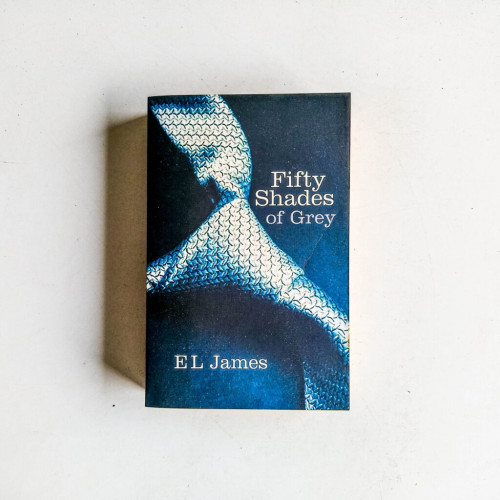Fifty Shades of Grey: A Comprehensive Analysis

Fifty Shades of Grey, the debut novel in E L James’ erotic romance trilogy, has indelibly marked popular culture. Its unprecedented commercial success, coupled with significant critical and societal controversy, makes it a compelling subject for in-depth analysis across various facets of literary and cultural impact. This exploration will examine Fifty Shades of Grey through the lenses of its genre, authorship, literary value, library presence, and lasting cultural reverberations.
Genre and Literary Classification
Fifty Shades of Grey is primarily classified as erotic romance. This genre, characterized by explicit sexual content and romantic relationships at its core, has seen a surge in popularity partially fueled by the success of James’ work. However, the novel’s classification isn’t strictly limited to erotic romance. Elements of contemporary romance, with its focus on relationships and emotional development, are interwoven with the erotic elements. Furthermore, the narrative explores themes of power dynamics, consent, and trauma, blurring the boundaries of the genre and prompting discussions about its literary merit. While some critics dismiss its prose as simplistic and lacking in sophistication, others acknowledge the novel’s addictive quality and its role in sparking renewed interest in the erotic literature genre. This polarizing reaction highlights the difficulty in definitively categorizing the novel and the subjective nature of literary judgment. The book’s explicit sexual content, featuring BDSM practices, pushes boundaries and challenges traditional notions of romance within fiction.

The Unique Blend of Erotica and Romance
The novel’s explicit eroticism is not merely a decorative element but is intricately tied to the characters’ emotional journeys. The BDSM aspects, while controversial (discussed in more detail below), become a crucial component of the power dynamics between Anastasia Steele and Christian Grey, representing both vulnerability and control. The unconventional nature of their relationship and the explicit details challenge established genre conventions and attract a broad readership precisely because of this unique blend of emotional intimacy and sexual exploration. This unexpected mix of emotional vulnerability and sexual dominance created a narrative that resonated with readers in ways that more traditional romance novels had not.

Commercial Success and Literary Criticism
The phenomenal commercial success of Fifty Shades of Grey cannot be denied. It topped bestseller lists globally, translated into numerous languages, and quickly became one of the fastest-selling paperbacks of all time. Despite this impressive achievement, the novel faced widespread criticism for its perceived poor literary quality. Critics pointed to its simplistic prose, repetitive phrasing, and melodramatic narrative structure. This disparity between commercial triumph and critical disapproval highlights the complex relationship between popular appeal and literary merit, indicating that widespread commercial success does not always correlate to refined literary artistry.
Author and Creative Process
E L James, the author of Fifty Shades of Grey, is a self-proclaimed “incurable romantic” and “fangirl." Her journey to publishing success is itself a compelling narrative. The novel began as Twilight fan fiction, titled “Master of the Universe,” and published online under the pseudonym “Snowqueen Icedragon”. The decision to move beyond fan fiction and create an original work, with its explicit erotic content, showcases a bold creative choice that reshaped the erotic romance landscape.

The Transformation from Fan Fiction to Bestseller
The transformation of “Master of the Universe” into Fifty Shades of Grey involved significant rewriting and expansion. The original characters, Bella Swan and Edward Cullen from Stephenie Meyer’s Twilight series, were renamed Anastasia Steele and Christian Grey, and the narrative was significantly broadened to develop a more intricate plot and delve deeper into the characters’ emotional complexities. This transition from online fan fiction, initially available for free, to a commercially successful, self-published, and eventually traditionally published novel demonstrates James’s entrepreneurial spirit and adeptness at navigating the changing landscape of publishing.
E L James’s Writing Style and Influences
James’s writing style has been described as simple, accessible, and sometimes lacking in sophistication. This accessibility, however, contributed to the novel’s broad appeal. The use of explicit descriptions and detailed depiction of sexual encounters, a key differentiator from more traditional romance novels, attracted a large readership. The fact that she self-published her work initially, before securing a traditional publishing deal, stands as testament to her innovative approach and her ability to connect with a previously underserved audience.
Reading Experience and Interpretations
The reading experience of Fifty Shades of Grey is largely defined by its erotic content. The explicit depictions of sexual acts, the exploration of BDSM themes, and the power dynamics between the protagonists leave a lasting impression on readers. However, interpretation and engagement with the text extend far beyond the purely erotic.
Educational Value and Life Lessons
While not a textbook, Fifty Shades of Grey has prompted discussions about healthy relationships, consent, power dynamics, and trauma. The novel’s depiction of an unconventional relationship, despite its flaws, provides a platform to examine the complexities of intimacy, communication, and the negotiation of boundaries within a romantic context. The story forces a critical examination of the line between healthy BDSM and abusive behavior, making it a starting point for deeper conversations.
Reading Habits and Cultural Context
The novel’s rise to fame coincided with the increased accessibility of e-readers and the burgeoning popularity of digital self-publishing. The discreet nature of e-reading made access to erotica more convenient and less stigmatized, potentially contributing to the rapid dissemination and popularity of Fifty Shades. The novel became a discussion point across generations, fueling conversations about female sexuality, power imbalances in relationships, and the impact of media representations on readers.
Libraries and Accessibility
Fifty Shades of Grey’s impact is also visible in the realm of libraries. Its inclusion in, and subsequent challenges within, public library systems highlight its societal impact and the ongoing debate about the appropriateness of erotic literature for various audiences. The book’s presence or absence on library shelves became a battleground representing differing viewpoints on censorship and literary freedom.
Public Libraries and Censorship
The novel frequently appeared on the American Library Association’s list of banned and challenged books, mostly due to its explicit sexual content and its representation of BDSM. This illustrates the ongoing tension between freedom of expression and societal standards of appropriateness, especially regarding material considered suitable for younger readers. The debates surrounding its inclusion or exclusion in libraries fueled broader conversations about censorship, access to information, and the role of libraries in a democratic society.
Digital Libraries and Accessibility
The initial self-publication of Fifty Shades of Grey leveraged the power of digital platforms to bypass traditional publishing gatekeepers. The easy accessibility of ebooks made the novel readily available to a wider audience than traditional publishing methods might have permitted. The dual accessibility, through both traditional print and digital channels, further ensured the widespread reach of the novel and its ensuing controversies.
Cultural Impact and Adaptations
Fifty Shades of Grey’s impact extends far beyond its pages. The novel’s commercial success sparked a renewed interest in erotic literature and impacted the film industry with a successful, though critically panned, movie adaptation. The ensuing discussions regarding the novel’s portrayal of BDSM and its underlying power dynamics continue to shape contemporary conversations on sexuality, consent, and relationships.
Literary Influence and Genre Evolution
Fifty Shades of Grey undeniably impacted the publishing industry. Its success influenced other authors to explore erotic romance, leading to a boom in similar novels. The novel’s influence is visible in contemporary erotic literature, highlighting its role in expanding the genre’s boundaries and challenging conventional portrayals of sexual relationships.
Film Adaptations and Media Representations
The film adaptation of Fifty Shades of Grey, though commercially successful, faced mixed to negative critical reviews. The movie adaptation, starring Dakota Johnson and Jamie Dornan, successfully captured public interest, translating the book’s popularity to the big screen. However, critical responses often mirrored criticisms leveled at the book itself, with criticisms surrounding the acting, plot structure and script. This shows the challenges and complexities involved in translating a highly controversial and sexually explicit novel to film, whilst maintaining its popularity.
Awards and Recognition
Despite its controversial reception, Fifty Shades of Grey received some accolades. E L James, the author, was named Publishers Weekly’s “Publishing Person of the Year,” demonstrating the significant commercial success achieved. This recognition, however, further ignited controversy, underscoring the conflicting viewpoints surrounding the novel’s literary merit and the power of marketing. The nomination for awards, and winning some, further demonstrates the cultural penetration of the book into the mainstream.
Communities and Fandom
Fifty Shades of Grey fostered a significant online community and fandom. Fans engaged in discussions about the book, creating fan fiction, fan art, and organizing events. This online and social media presence played a pivotal role in the book’s marketing and contributed to its viral popularity. This active fanbase, whilst not directly improving the novel itself, demonstrates the book’s ability to create bonds between readers and further spread awareness.
In conclusion, Fifty Shades of Grey remains a fascinating case study in popular culture. Its remarkable commercial success, coupled with the significant debate surrounding its literary quality and social implications, underscores its unique position within contemporary literature and its enduring legacy on the landscape of erotic romance and popular culture as a whole. The book’s influence continues to be debated, studied, and discussed.